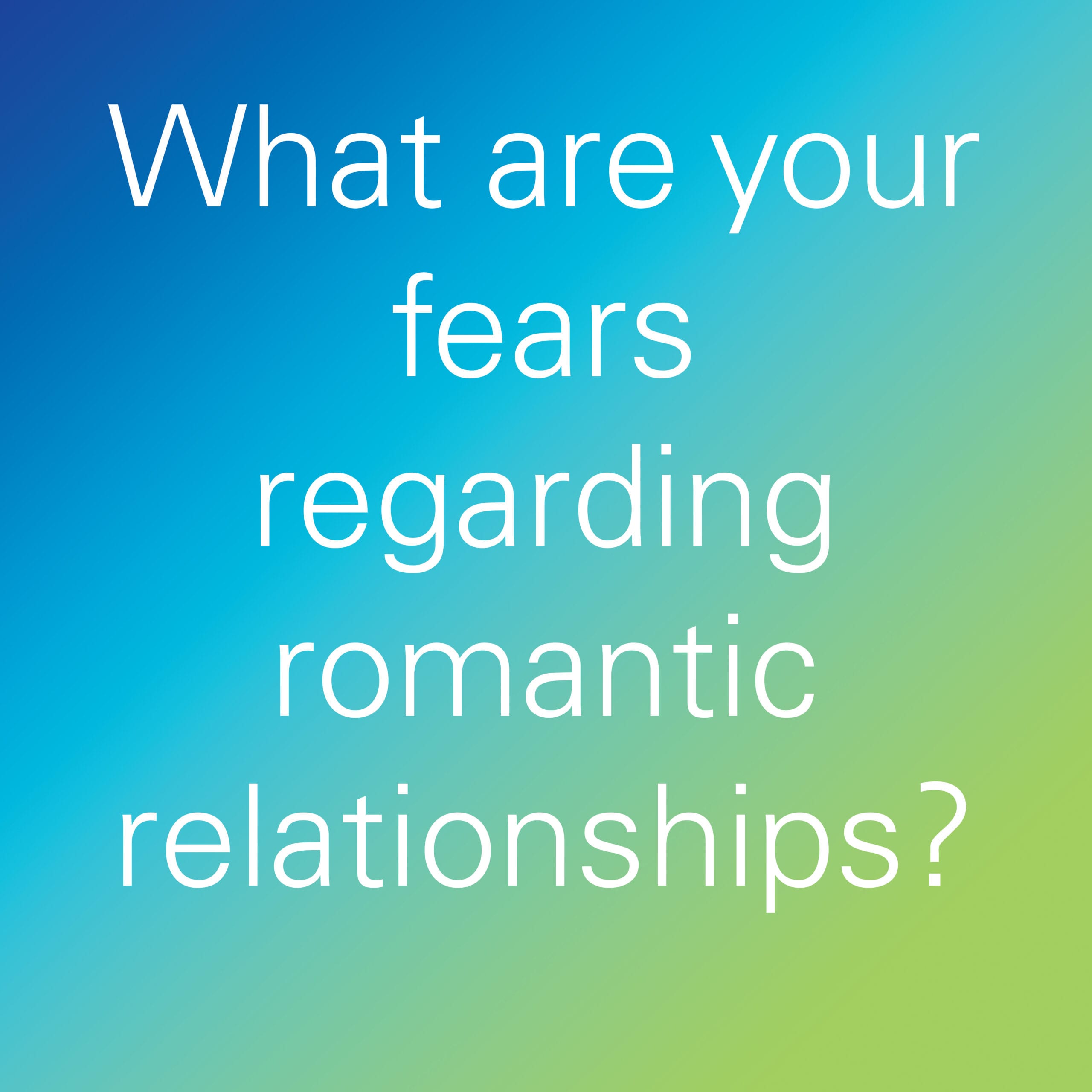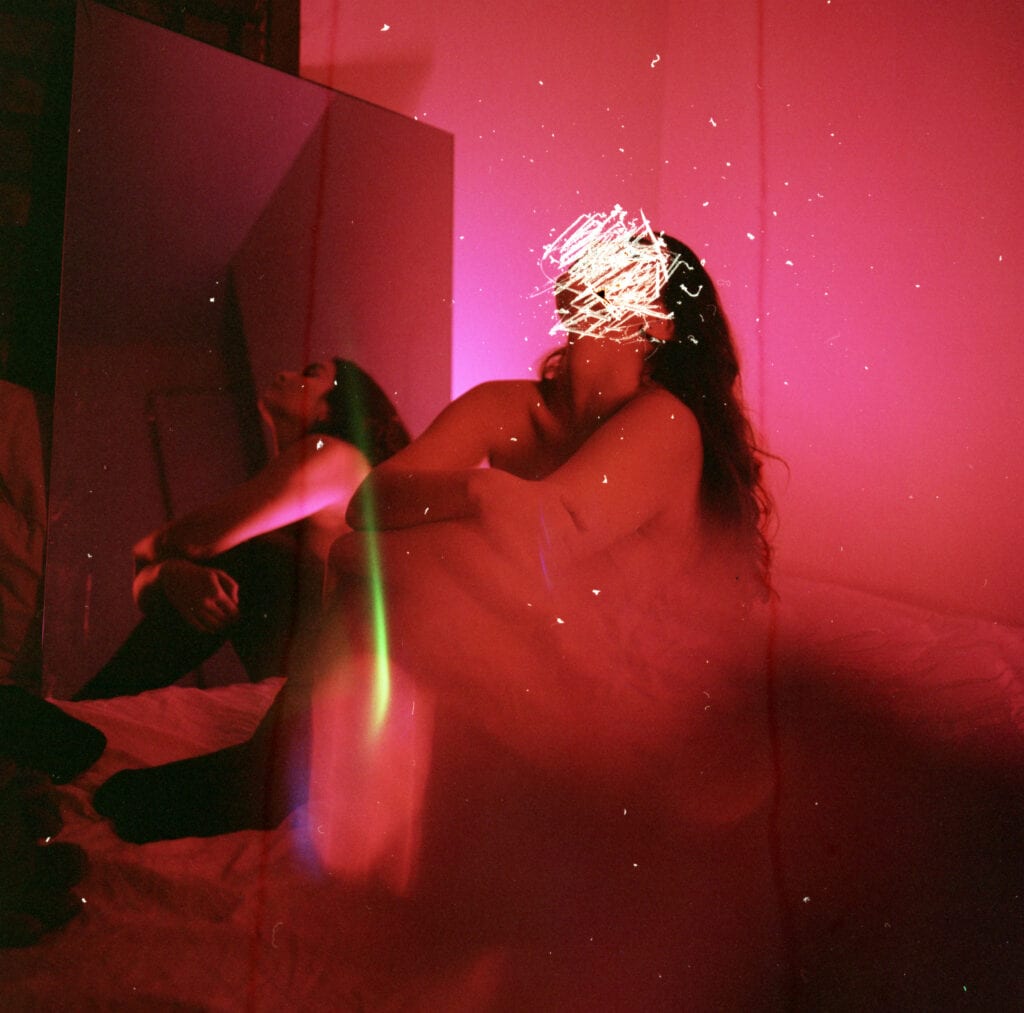
This past year filled with social distancing and quarantines has destabilized and, for most, reshaped the way we live and relate to others. For many living alone through the COVID-19 pandemic, it wasn’t until the promise of the various vaccines that we could even dream of the hug of a loved one, or even more thrilling, a stranger!
This widespread sense of isolation attracted me to Ana Vallejo’s exploration of intimacy and the quest for human connection with her project Neuromantic. Although Vallejo’s work on Neuromantic predates the COVID-19 global pandemic, which propelled many communities and businesses to embrace the digital sphere to help keep us connected, her research methods of internet crowdsourcing to build a living archive of love, connection, and intimacy feel remarkably prescient. With that in mind, I reached out to Vallejo for a discussion about her artistic process and working on Neuromantic.
Shannon Crider: Tell me, what inspired you to start this project, Neuromantic?
Ana Vallejo: I started working on this project in 2018 while preparing to apply to the New Media program at the International Center of Photography (ICP). I worked on my project, Entre Nubes, for three years and felt the urge to speak from my own experience.
Volatile relationships had always been at the center of my life, and I concluded that I was a love addict. I wanted to understand my behavior, and as a biologist, I naturally turned to neuroscientific texts. I found many articles on the physiological effects of infatuation and how it can activate our reward system in the brain, acting like a drug.

SC: What about your artwork before this project? Were these themes of trauma and intimacy present in the earlier work?
AV: I have always been interested in the misunderstood and in things that lie outside the status quo. I grew up with a schizophrenic father and have struggled with mental health myself. I realize I am a bit unconventional and have felt misunderstood on many occasions throughout my life.
I am obsessed with connection. Humans are a social species and need meaningful relationships to survive. I strive to connect with other disciplines and to make my projects collaborative. For example, in Entre Nubes, I reached out to street artists and had workshops in the neighborhood. It felt like the connections and experiences lived during these activities were far more meaningful than the documentary photos I took.
As my projects have advanced, I’ve noticed that neuropsychiatric disorders are becoming central themes in my research. I strive to understand their nature and causes as well as mechanisms to heal trauma and transcend. For example, I am very interested in epigenetics and how intense experiences (traumatic and healing) can change gene expression and be passed on to our offspring. I am interested in how addiction and trauma are passed on from generation to generation and in how the way we experience and process emotions and the quality of our social bonds can deeply impact our wellbeing.
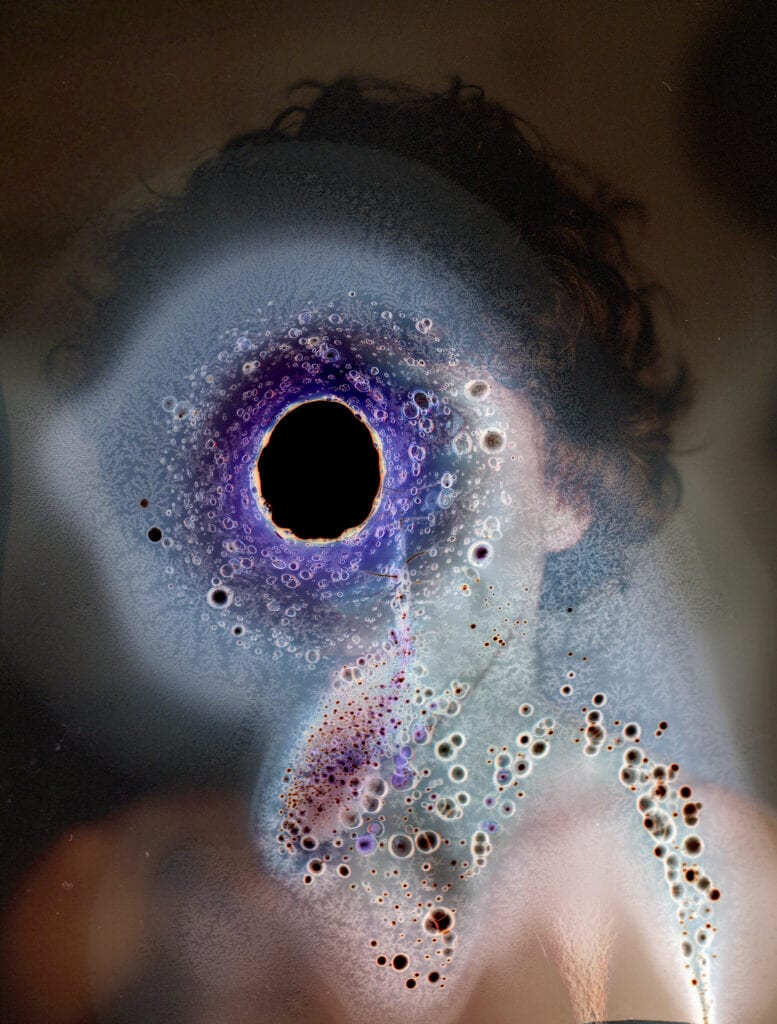
SC: You have a degree in Biology. How has your scientific background shaped Neuromantic?
AV: I met fascinating people through my research. Some of them include Partha Mitra, a brilliant Indian theoretical physicist and neuroscientist based in New York City. His lab is mapping out the mouse and marmoset brain circuits as a whole in contrast to looking at neuron synapses individually. The lab’s goal is “to obtain conceptual breakthroughs into how brains work.” I also reached out to the American neuroscientist Lucy Brown as she co-authored with Helen Fisher many of the neuroscientific papers on romantic love. She and I have continued an ongoing dialogue on how romance acts on the brain.
More rigorously, I have been exchanging emails and conversations with the independent curator, artist, writer, and researcher Janna Dyk. We have discussed how neuropsychology and visual studies intersect. This has been very insightful in my quest to integrate scientific data and art.
For the anonymously sourced data annex of the project, I collaborated with the wonderful Andrew Hill, a data scientist who recently graduated from New York University. Together, we have been designing a second pilot of the love survey where I ask people very intimate questions like “Do you have a love secret you want to confess?” or, “What is your worst relationship quality?”. We are looking at the attachment styles of the participants. We want to see if we can map out how people with different attachment styles feel, experience, and react in romantic relationships. The idea is to make the work interactive and allow the public to build on the project as well.
Finally, I really hope to meet and collaborate with Bianca Jones one day. Bianca works at the Zuckerman Institute of Columbia University. She studies epigenetics and the effects of trauma on gene expression, specifically how these changes can be passed on to later generations through the sperm and egg during fertilization. Her research is incredible.

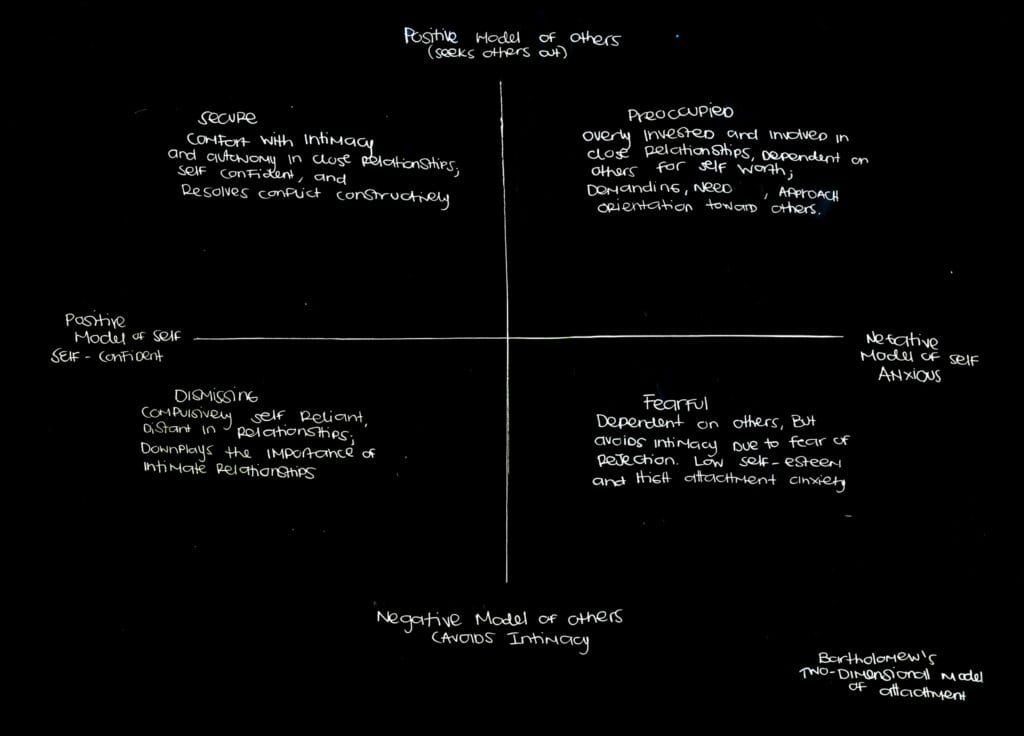
SC: For Neuromantic, in addition to your reading studies and consulting with subject experts, you have interviewed people in your life. What did you learn from excavating your past with lovers and family?
AV: I was able to confront deep wounds and get to know myself better. Thanks to the project, I have engaged in deep conversation with family members, which has led me to uncover and learn about episodes that I had been carrying all my life unconsciously.
I was already experimenting with color, but I started using light in more complex ways and using symbols from the memories or stories from my family and my life that affected me the most. The photos speak about paranoia, addiction, suicide, abuse, and death, but I also want them to grab you so that you experience the inebriating and toxic love.
Trauma occurs when we go through an experience that is so disruptive that our body and psyche can’t process it. It lingers in our consciousness and body but as a source of internal conflict. The healing process is greatly about integrating the experience to our concept of self to minimize the pain, fear, and blocks caused by it.

SC: You also attended meetings for love addicts and solicited anonymous submissions from strangers over the internet about their experience with romantic love as a part of your research. What was different about the discovery with strangers versus when you focused on your personal experience?
AV: To me, my personal experience is the starting point. I am a very self-reflective person. I am constantly analyzing my behavior and thoughts, and I feel my emotional reactions very deeply. It can escalate to rumination and anxiety very quickly as well. Neuromantic has allowed me to find outlets for my internal processing. Likewise, taking a step back from myself and looking at others allows me to gain perspective. I naturally delve deep into myself but also want to learn and know more about the experience of others. The more you understand it, the better you can take life as it comes and understand that people are reacting from their subjectivity and past experiences. Letting go of control and realizing that you are part of a delicately intertwined system that is bigger than yourself can be liberating.
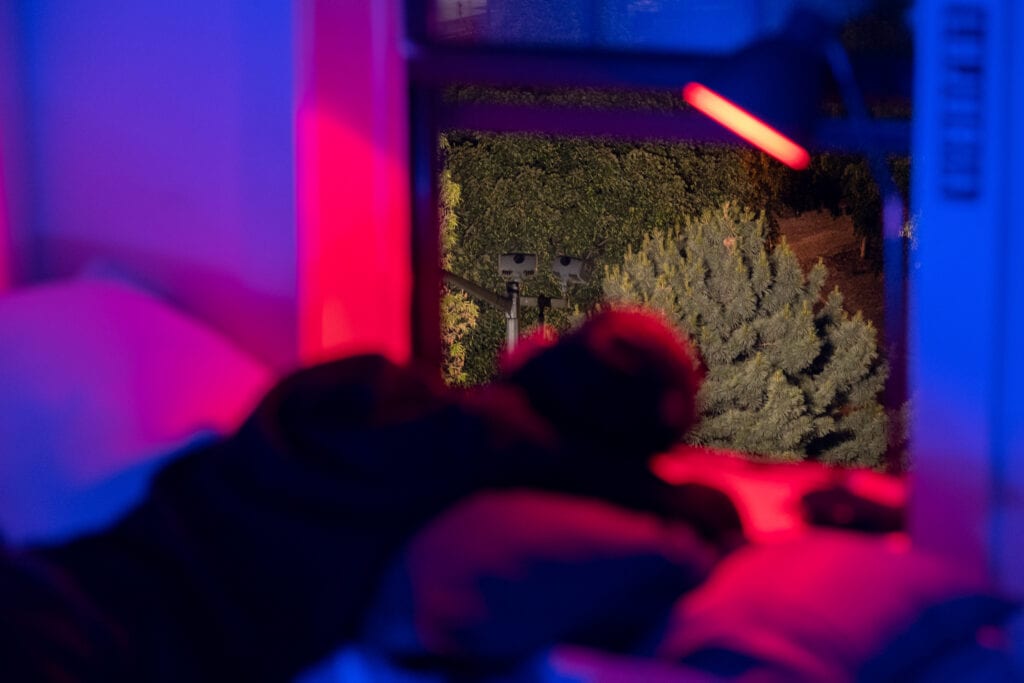
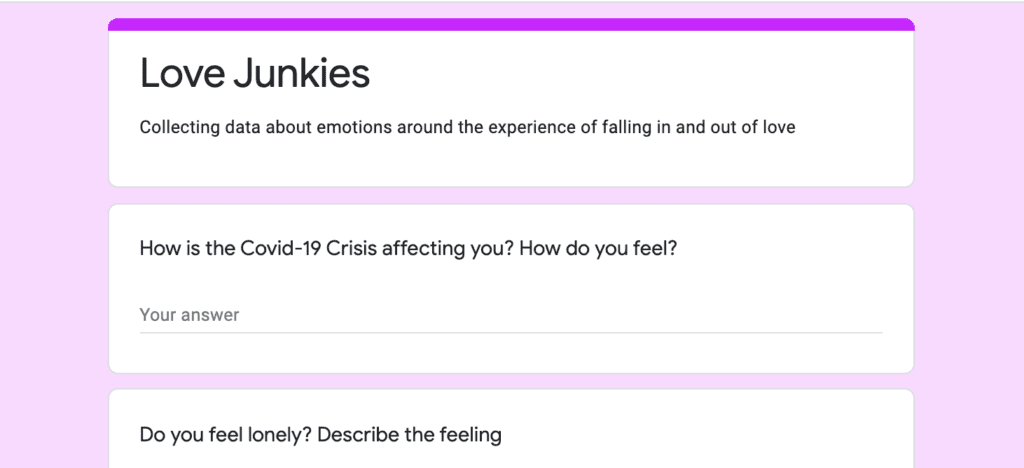
SC: Research has been such a major component of Neuromantic. Can you tell me more about the images inspired and developed through this project?
AV: I started out with the research and struggled to figure out how to approach this concept visually. During the lockdown, I connected on a deeper level with the project and started photographing and experimenting a lot in my apartment. Collages helped me process a lot of the anxiety I was experiencing. Ripping and mixing the paper, color and textures helped me work more intuitively. I used my blood to do photograms in my bathroom. I want to learn more about photograms.
The bathroom is one of the places where I have recurrently photographed. Bathrooms are a cleansing station in the home, and some of my hardest traumas have taken place there.
I photographed my cousin a lot during the lockdown. We were living together and had a very similar life story. I try to keep identities concealed, but everyone I have photographed is either someone I have dated or close friends who have gone through similar experiences to mine. They become my mirrors.
Curated anonymous submissions from Ana Vallejo’s “Love Junkies” online survey.
SC: Where do you want to go next with this project?
AV: I want to create a multiplatform experience of intimacy and the raw emotions associated with it. The photos are the affective messages and the research and data, the rational ones.
I’m working to map the data collected into an interactive archive of anecdotes and experiences around intimate romantic relationships. The data will be mapped out according to an attachment style assessment that we do in the survey. The survey will provide an anonymous and safe space of expression for the participant. Likewise, it will bring insight to the public by showing our collective patterns and our intricate similarities and differences.

About the artist
Ana Vallejo is a conceptual documentary photographer from Colombia based in New York. She has a background in biology and is fascinated with the brain, human consciousness, and its ability to expand and transform. Her projects are research-based and experimental. They invite chance, error, and collaboration to delve into human perception, memory, and emotions. Vallejo graduated from the New Media Narratives program at the International Center of Photography in NYC as a recipient of the Mary Ellen Mark Memorial Scholarship and a Director’s Fellowship. She is a contributing editor for Fotodemic, an X-Photographer for Fujifilm Colombia, and a member of Native Photograph, Authority Collective, and Women Photograph.
Vallejo’s work has been exhibited in Colombia, New York, Los Angeles, Germany, India, Italy, and Malaysia. She has been published in Vice, Architectural Review, LensCulture, and PHmuseum. Most recently, she was selected for the 2020 Addis Foto Fest in Addis Ababa, Ethiopia; the Currents New Media Festival 2021 in Santa Fe, New Mexico; and the Foam Talent Call 2021.








